HOLLYWOOD (Perfect Music Today) 11/8/17/–Frank: I’m speaking with, Michael Wilson Producer and Howard Sapper Tour Director , discussing the creation of Kitaro’s KOJIKI & THE UNIVERSE 2017 world tour.
Howard: My name’s Howard Sapper, and I’ve been working with Kitaro off and on since 1987, since 1999 in a I’m very excited about this tour. It’s called Kitaro’s Kojiki and The Universe, and it’s a very intimate presentation for Kitaro.
It has less technology in terms of light, and sound, and musicians than his normal tour. We thought to create a two-part show that, as the first side is a deep journey of the soul using a Bhutan dancer, two Taiko drummers, himself, another keyboardist, and a wonderful violinist from New York. And, the show opens with a 18 by 8 foot mask exact same mask that the dancer’s learn.
The majority of the stage is 90%-95% dark, and the audience is drawn into the experience through the dancer of this inner journey of the soul. It features some of Kitaro’s most popular and-, and well-known songs, and set to this particular environment where the music is an accompaniment to the visual and the spiritual journey that the dancer takes you on.
The second segment of the show is the outer journey. The Kitaro uses imagery that he collaborated with University of Tokyo, NASA and Hubbell Space Telescope to create a re-creation of the Koziki…
Howard: Okay, so…and Michael, you can augment this with your knowledge of the music technology, anything, as soon as I’m finished with this.
So, the first part is a deep inner journey of the soul using the Bhutan dancers, the Taiko drummers, Kitaro, his other keyboardist, and-, and-, and this wonderful new violinist we’re using from New York named Blaney.
This takes you down deep into that personal experience that we all have if we’re doing any self-exploration.
The second half is the outer journey, where Kitaro uses the imagery of Hubbell Space Telescope, NASA imagery, and some simulation that was created with or University of Tokyo astrophysics’ department, and that takes you from the Big Bang Theory…Big Bang – excuse me – all the way to a hundred years from now.
Seven songs from the, Grammy-nominated record, Kojiki, and it’s set to the mythology of Kojiki, which is the Japanese creation ideology. It’s beautifully set. Kitaro has perfectly orchestrated his music with imagery that they’ve created together, and it takes you on this journey.
The audience from both the first set and the second, from my experiences, with this very deeply emotional mood and transformed by this experience. And Kitaro is very happy at this time in the world where we are, to be able to present a show with this depth, and meaning, and this raw level of emotional intimacy using his amazing music and this imagery in this dance to bring forth the message that he wants to create at this time.
Michael, can you augment that?
Frank: you know, traditional Japanese kind of crossover fusion, uh, and then when you get…you know, that’s beautiful, and-, and you just basically project, uh, one of those masks up on the-, up on the screen, which is really cool, but when you get to the, uh, the Hubbell stuff, that’s-, that’s really what I’m kind of…what I’m interested in…is knowing, you know, what is the resolution…what is that? A 4K, uh, resolution from Hubbell?
And, also, something that I was kinda curious about is did you-, did you enhance, uh, any of that footage, because it seems like, uh, time lapse to me? Uh, is-, is there some animation that goes into that, or some time lapse,, on part of, …
Frank: NASA’s actual capturing of-, of that, of all of those, , galaxies? , it just-, it just seems like animated…it-, to me it looks like animation it’s so good.
Michael: Oh, I mean, it’s actually, well, as with any of the images that are produced from, , either …some of the ground-based, on data collectors and space based telescopes, like Hubbell…there was actually a number of satellites that are utilized. Some of them are-, were put up, uh, by, uh, Japan, and they are just focusing on looking at the corona of the sun, alone. And that’s what they do 24/7.
And,a lot of that information comes back as data, as opposed to images and it has to be, um, uh, processed.
Frank: I’m curious about that. Like, how would you-, how would you turn data into animation?
Michael: Well, that’s something that they add-, that the Department of Astrophysics, that’s where the, NASA and all these, uh, um, scientific organizations, , institutions, that’s what they do.
Michael: That’s a little bit beyond me-, beyond me. But what happens, there are-, the movie, uh, that’s created has, uh, both-, it’s based on stills, as well as, uh, video footage that’s created from-, from the instruments
Howard: So this is looped to-, it lasts on screen longer, but, you know, all the-, all, I mean everything that we see, whether it’s from-, from-, from the Mars probes, or any of the telescopes, have-, had a certain amount of processing to make it so it makes sense to us.
I mean, obviously, there’s-, there’s images that are snapped, that are just photos, but just like in your digital camera, it’s zeros and ones that have to be re-in, you know, reprocessed so they look like images to us. But, I don’t-, I’m not clear about whether, that’s actual animation created. I think it’s mostly looping, and piecing together, uh, the, uh, the information that’s…whether it’s images or moving pictures-, moving-, video, that’s-, it’s pieced together.
And the work of the filmmaker, that’s what’s it’s about, is about getting the timing right, getting the-, the energy right to co-in-, it to-, to work with the Kojiki, the actual musical piece, which was created before in-, the film was.
Howard: Clearly the Big Bang stuff was not captured on video at that time
Michael:: Correct.
Howard: projection going back billions-, yeah, billions of years, or whatever it is. But, this-, that’s simulation. So that’s-, that’s a…
Frank: And-, and that’s being simulated…uh, uh, who-, who are you getting the footage from, actual…? I know that there’s probably…it ripples through some of the agencies, including NASA and who knows who else, but who do you directly get those images from?
Howard:the film was created by-, the director of the-, observatories at the-, at Kyona University.
He created the film, and-, and as it gets into my hands, I’m the producer-, I’m the production manager, and I oversee putting the show on, uh, in each city. Uh, we-, we were given the content as a complete film which is very similar to the one that you-, you can purchase, , on Blu-ray disk.
Frank: Okay, so-, so you’re getting, uh, like, 4K…is it 4K resolution?
Howard: the max Blu Ray is. We don’t-, we don’t step it up beyond what the highest resolution of Blu-ray.
Frank: I see.
Howard: Some of ‘em are higher res than others, as you can see, but those images are-, are blocked off on the, ah, outside because the, um, uh, the resolution’s not as high on some of them
Frank: So really-, these are kind of man-made renderings of what the interpretation of the data is coming back at, and it’s interpreted by one of the science, uh, groups that you’re working with in order to-, to actually bring it into a visual medium?
Howard: Some of them are, and some of them are-, are more direct-, are more, uh, just, direct, uh, uh, uh, imagines that-, that were provided. But, yes. Some of their-, the animation of the things that, uh, the Big Bang, and other-, and some of the interspersed, uh, images…
Frank: Yes, deep space images
Howard :…but, it’s a mixture of, , interpretation and actual real footage.
Frank: Because a lot of that stuff is moving and ah, and I was sorta wondering, like, “Well, if it’s moving, there’s no way that you could get a time lapse of, you know…it probably takes centuries or millenniums to, uh, to actually, you know, do a time lapse of that stuff.
Howard: Well, I know that there’s at least one of those, and it says it on the-, in the film, there’s one of those, uh, uh, satellites that’s looking at the it doesn’t do-, it does it for, like I said, every day, all day, for years.
Frank: Oh, wow. That’s cool. That’s cool. Yeah, that’s really great, so…
Michael: Yeah,
Frank: …just another-, another interesting thing, uh, and, uh, this probably comes down to the way that you’re, working with those visuals., I noticed that, like, Kitaro is playing a lot of this music live, which is probably written music, and probably right down to the-, right down to the bar and beat. So, it’s timed according to his playing, but it is live. He’s playing live. So there is a little bit of, probably, some improv, or there might be a little bit of, uh, time difference between, uh, uh, the visuals and what he is playing.
So , what I’m getting at is how…I notice that there’s a lot of transitional, moments where, you know, you’ll be in a galaxy and you’ll be spinning and then Kitaro will just bring the music down, and there will be a pause, and then the next section will start.
Are you actually, in real time, editing this, or…how are you synchronizing these visuals so perfectly with what Kitaro’s doing?
Michael Wilson Producer Kitaro’s KOJIKI & THE UNIVERSE 2017 world tour.
Michael: the film, as it’s available commercially, has the complete mix in it, and that’s, um, uh, uh, prod-, a produced piece, and obviously the timing doesn’t change. For the purposes of the performance, we have…basically we took the-, a very-, all the same material, and we created a…it’s called a minus mix, so we’ve removed some of the key parts that Kitaro played, as well as some key parts that, , our violinist plays, and-some other, parts in it that, uh, our second keyboardist plays, and everything else is the same. So there’s a basic-, there’s a basic levels, uh, um, uh, music, uh, that’s attached to the video that doesn’t change.
Frank: Oh, I see. So, let-, let me just interject really quickly. So, um, you’re actually playing back, uh, tracks that-, that-, that-, that are record-, pre-recorded correctly. I ‘m right with that?
Michael: Yeah.
Frank: You’ve pre-recorded some music so that the-, all the musicians are, basically, cued to the pre-recorded music and they play along to that. Is that right?
Michael: Correct.
Frank: Very good.
Michael: Correct. But-, but Kitaro’s , signature melodies, as well as the, , signature melodies played by other musicians…those are played live, and there is a certain, within the framework of the timing of the film, there is opportunity for some improvisation, uh, but, uh, in-, not necessarily improve, like, uh, you know, that-, that you might be familiar with, like a jazz improve, but there’s-, there’s-, to take into account, , emotions in the moment, and the relationship between the musicians on stage, which is also very important to Kitaro. It’s that-, there’s that intimate musical relationship, so there’s a little bit of room in there, but as far as timing goes, once the films starts, they better stay on time.
Frank: I get it. I get it. So, really, there’s no editing , or switching, or fading on your side, on the visual side. You push a button and it starts playing, both the visuals that are slaved with some of the parts of the music that cue the-, the live players to be in-sync with everything.
Michael: Exactly. …we don’t have a drummer on stage, we don’t-, there’s not a-, there’s not really a drum-, there’s no drum kit, but, yes, it says if we’re playing, with, a backing band that’s been pre-recorded. Yes.
Frank:Yeah, that’s really cool. So, that’s…
Michael: if you were to play the track-, if you were to play the track without the live performance, it would not make sense. It’s incomplete without the live performance, and that’s sort of important to know…that there’s, um, you know, a fairly high percentage of live content that’s in the moment.
Frank: Yes. And- it’s really kind of shredded down to a basic, maybe, one instrument of some sort just in order to cue, uh, everybody with the visual effects, uh, and-, and then-, then they know exactly where to come in. And if they give-, if they’re off a little bit, they gotta make sure that they catch up with the pre-recorded, uh, instrument that’s being played.
Michael: Yes, and on stage, you know, Kitaro’s our-, leader, so they-, they are not watching the film, they’re-, they’re, connecting with Kitaro onstage.
Frank: He’s conducting. I notice he’s conducting a lot of that material.
Michael: Yes, , that’s-, that’s been, as has always been his way, yeah.
Frank: getting to the technical, uh, parts of the show, what kind of projectors are you using for, uh, for this?
Michael: They’re-, fairly standard commercial projectors. We’ve got a Chri-, a 7000 lumen Christie projector that we’ll be traveling with on this West Coast run. If, uh, the venue has, uh, an appropriate projector, uh, for their room that’s, uh, strong enough to give us the-, the-, the large image and the resolution that we want, then we’ll use that one, but we’ll be traveling with a-, a 7000 lumen Christie projector.
Frank: can you tell us a little bit about your background? I’m just kinda interested in knowing, uh, how you-, how you kind of evolved your career in being able to do something, like, so interesting like this.
Michael: Well, I’ve been involved with my business…
Howard: Before Michael answers that…
Michael: Go ahead, Howard.
Howard: I want to qualify it. The mask imagery is not projected, it is hung, and
Michael: Yeah, and there actually have
Frank: Oh, really. The mask, uh, so that’s a real mask?
Michael: It’s a paint-, it’s a real-, it’s a physical…
Howard: It’s a painting.
Michael…um, hanging.
Frank: I get it. And is there any…
Michael: It’s not actually a mask; it’s a painting of a mask.
Frank: is it lit at all?
Michael: It’s-, it’s lit enough so we can see it. Yes, obviously. It’s a
Michael: mask, so the back-, back- background… back-, background.
Howard: The mask is that the dancer’s still well lit and the mask is. That’s pretty much what you get in the first stage.
Frank: Are you back light-, lighting it, or is it lit from the front?
Michael: No, it’s lit from the front.
Frank: I see. Okay, cool.
Howard: And now please return to that question, but I just wanted to make sure that you were aware that we weren’t projecting the mask.
Frank: So, um, uh, Michael, are you-, are you out of the film industry, or the music video? I mean, what-, what is your background?
Michael: I’m in the music-, I’m in the music industry. I’ve been a sound engineer, uh, for 26 years, and, uh, and as, with everybody in the business, your career is and you-, you accumulate more skills and-, and also tasks, so, um, I’ve been Kitaro’s production manager, overseeing sound, stage, lights, crew, uh, uh, logistics and things, for, um, uh, almost 9 years now.
Frank: Oh, that’s interesting.
Frank: So are-, are you also mixing the sound, or you have a sound mix…what are you doing? Uh, are you actually, uh, are you on a headset directing, or are you actually hands-on?
Michael: actually, this tour will be the first tour in nine years that I’m not-, I’m not mixing. Um, I’m gonna be just working, uh, making the arrangements from home. Uh, but, typically, I, uh, historically I’ve been a sound mixing, sound engineer, so…
Frank: I too have mixed sound as a engineer and performer
Michael: we are all on radios, we coordinate timing, uh, Kitaro usually looks at somebody with just a, an-, a look on the eye, and that’s when it’s time to start…uh, hit ‘play’ so to speak.
And the timing…we work out the timing to where there’s not, doesn’t need to be a whole lot of conversation about-, about things, uh, but we have, uh, the crew has radios and we can talk to each other about certain things that need to happen, or if there’s issues that popup. But, it’s-, it’s, uh, it’s-, we’ve got it kinda coordinated to where once it goes, it’s, you know, we’re-, we’re in the live situation, and Kitaro’s gonna be, uh, directing.
And, usually the things that, uh, cause us to change course, or make decisions, have to do with technical glitches, to say if they come.
Frank: So you took the-, the-, this material that you got form Hubbell, uh, and you-, you edited it. How did you-, how-, look, can you-, can you tell me a little bit about the editing process? Did you use Premiere? Did you use Avid? Uh, what-, what were the…
Michael: Actually I cannot tell you about the editing process, because it was not-, we did not-, I did not edit it. It was, um, I believe that was the Professor uh, from Kita-, [phonetic] Kyoto University that did it. So, we were presented with-, I was present-, you know, Kitaro is-, is a-, colleague of Kitaro’s so we-, they were obviously in communication, uh, because he’s edited it, um, to coordinate specifically, with a piece of work, a piece of music that Kitaro’s created.
Frank: Oh, good, so…
Michael: I get it at the end.
Frank: So, interesting… Kitaro…these are-, these are pieces that Kitaro has-, he’s already written this music, not necessarily for the visual effects? He just wrote…
Michael: Visual, edited it…yes, the visuals were edited to coordinate with-, with, uh, Kojiki. You know, Kojiki is, uh, um, is a Japanese myth about the origin of the universe, so there’s a certain storyline that is older than all of us…
Frank: Yes, very old soul
Michael: you know. It’s one of the oldest myths of creation that-, that we know of, uh…
Michael: …that’s, ingrained in people, uh, that grew up with it, so…
Frank: Oh, that’s really cool. So-, so Kitaro actually, uh, collaborated, let’s say. Uh, did he see the visual effects, uh, before he started writing the music, or did he write the music and then the artist came along and actually, uh, put the visuals to his music?
Michael: I think it’s a little bit of back and forth. The music was, uh, uh, an album that was, uh, created by, you know, created by Kitaro, and then when the film-, when the film came out, which was based on each of the-, each of the songs, to the tracks that Kitaro made, uh, they, uh, made a new mix based on some, uh, using, uh, elements of live performance with a-, with an orchestra…
Frank: Yes, Live is best
Michael: …for the, uh, for the commercial release, so you see-, you hear elements of music that was performed since-, at, you know, uh, since the, uh, the original album was created, and that’s how they created their minus mix.
We multi-track recorded a number of the performances over the last couple of years, and-, and during those performances of all of Kitaro’s work, there were songs from the Kojiki album, and those are the ones that they wrote down and created this minus-mix for the live performance, but they also used that to create the, uh, the sound track for the commercially available film.
Howard: This record was originally-, this record was originally recorded in 1990 at Sky Ranch at, uh…
Michael:So the album has been around for quite awhile, and, uh, you know…
Howard…I know 27 years.
Michael:You mean the undertaking to coordinate the music-, with the-, the images with the music.
Frank: So-, he came out with this album in 1990, and then-, and then, um, he’s probably come out with other albums that passed that, right?
Howard: Well, Kitaro’s got, you know, 40-plus albums.
Frank: So he took a look at -, the work that he did in 1990, which this artist from-, from NASA, or whoever the, uh, the render of the material, then he-, the artist put together an edit to his music from 1990, and then Kitaro went back in, and did he actually re-mix it, or did he recompose-, did he actually re-record music specifically for this tour?
Michael: That’s very interest-, that’s a very good question. It’s a little bit of chicken, and what came first…chicken or the egg? So, I’m not sure, I think that the-, the album was an inspiration for Professor, and then once he started working, compiling images, I’m sure there was a little bit of coordination what-, to how-, how to make it work. I’m not sure if there was.
Howard: They collaborated in that process, Michael.
Michael: The final edit, you know, it needs to be massaged the-, timing-wise with the music, so-, so it required, working together very closely on that.
Frank: It’s really nice work. I really enjoyed it. And, I look forward to seeing you guys in Los Angeles.
Howard:If you wanted information that you can add, it’s Kitaro’s had 24 studio records, 8 live records, 14 soundtracks to films that he’s compels to, and 42 compilation records.
Frank: Wow. That’s really amazing.
Frank: Has he been nominated….?
Frank: Has he been nominated for anything?
Howard; Sixteen Grammys. He’s won a Grammy, and he won a Golden Globenfor Heaven and Earth, the Oliver Stone film.
Frank: Oh, very nice. Very nice. Okay. Uh, that’s really great. So, where are you-, where are you guys playing in Los Angeles?
Howard: Michael, you got it, or you want me [indecipherable] [00:27:20]?
Michael: Yeah, we’re playing at, uh, Emmanuel Presbyterian on Wilshire.
Frank: And what day is that?
Michael: That’s the 17th. of November.
Howard:It’s Saturday, the-, Friday the 17th. And San Diego, at the Garfield Theater, [indecipherable] [00:27:38] Garfield Theater on the 16th , and then we go to San Francisco and we’re playing in Grace Cathedral on the 18th.
Frank: That’s really good.
Howard: On the 19th we’re in Healdsburg at the Raven, and we end the tour after Thanksgiving in Seattle, and Portland, Portland and Seattle on November 30th and on December 1st.
He chose to be most of these West Coast venues in 8] sacred place. They’re-, like this church, in LA’s beautiful live] you see it about 8 to 10 times a year for special concerts, and, of course, the Grace in San Francisco has a long, uh, magical musical history, along with everything else that’s happened at Grace Cathedral.
And our last day in Seattle is in a gorgeous room called the Center for Spiritual Living in Seattle. It’s a 1200 seating’ room that’s state-of-the-art. It just does everything from major speakers to music presentations, We’re very excited about what we’ll be able to accomplish in that room as well.
Frank: if you wouldn’t mind, when I come to see you guys in LA, if I could, uh, maybe, get a, , on-video interviews with you guys. Are you gonna be in Los Angeles?
Michael: I don’t know about
Howard: Michael won’t be. I will be, but we’re hoping to-, , from my conversation with you and Gayle to see if we can get a couple Kitaro with you, , previous to this.
We’re gonna be in San Diego on the 14th, Michael? Is that when we’re gonna get down there?
Michael: San Diego…we’ll arrive the evening of the 14th, and then
Michael: the team will be rehearsing all day.
Howard: rehearsing, yeah, and then a day of dress rehearsing. And there are gonna be some interviews on those two days.
Frank: I would like to thank Howard Sapper and Michael Wilson for there insight and time, look forward to the concert in Los Angeles November 17th
https://www.domomusicgroup.com/kitaro/
Kitaro brings a totally unique audio/visual experience to California with his upcoming “Kojiki and The Universe” tour beginning November 16 and culminating December 1, 2017. Tour stops include San Diego, Los Angeles, San Francisco, Healdsburg, Portland and Seattle.
Michael Hepworth
287 S.Robertson Blvd, Beverly Hills, CA 90211
http://twitter.com/MrSpiritsman

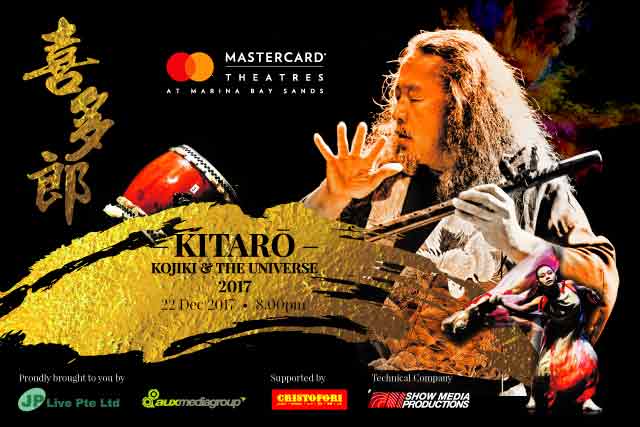
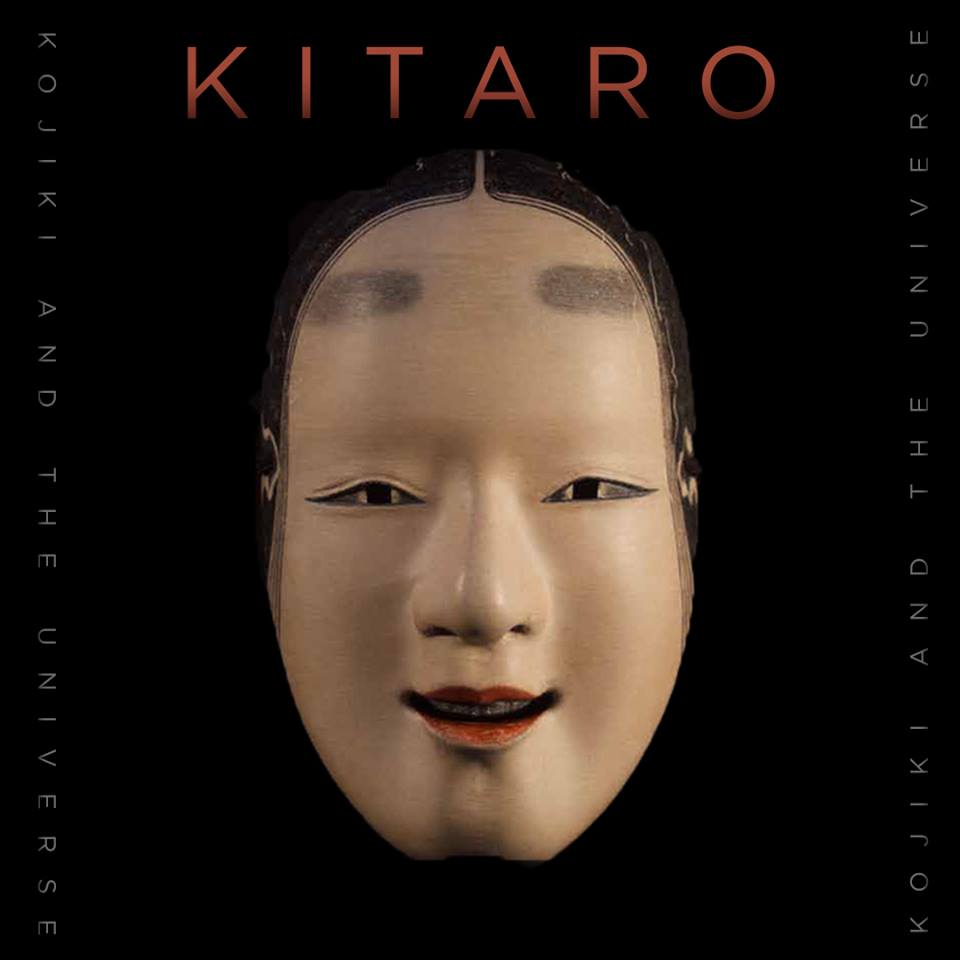
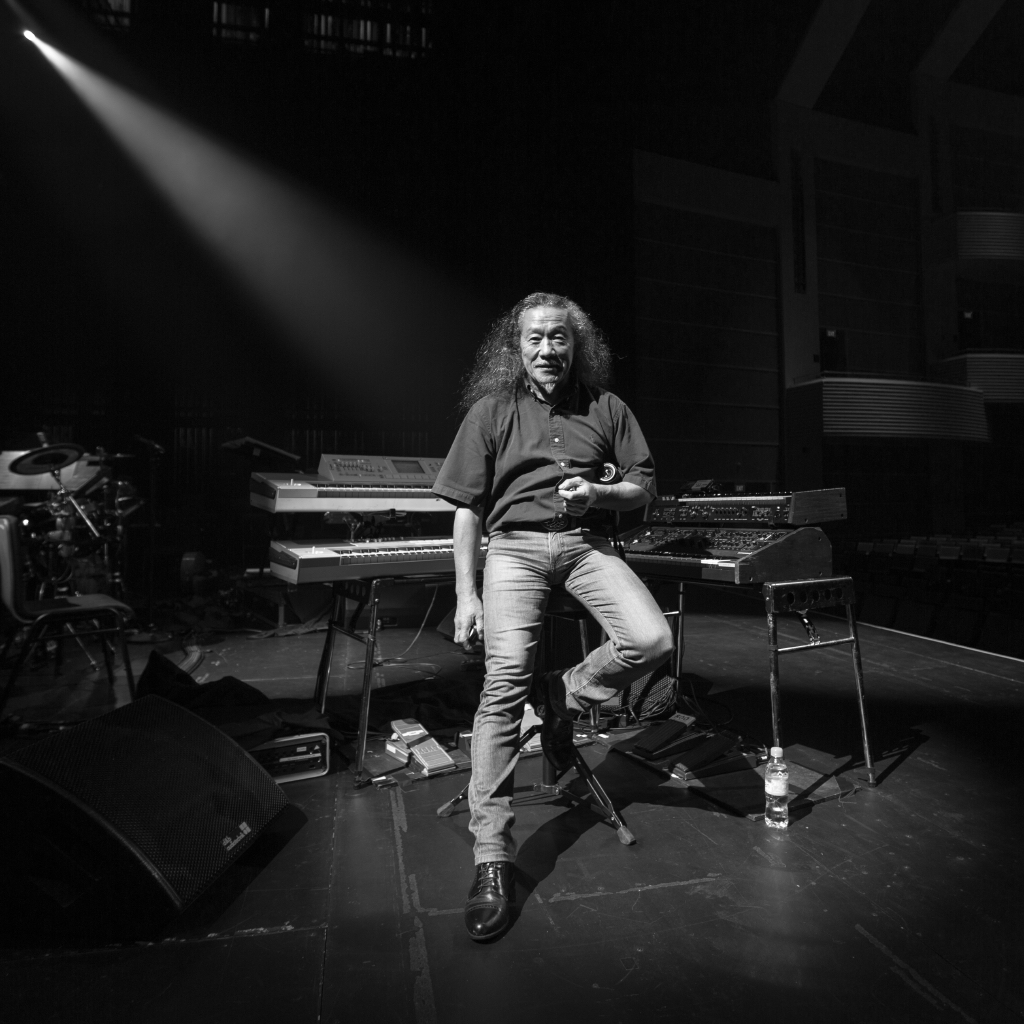
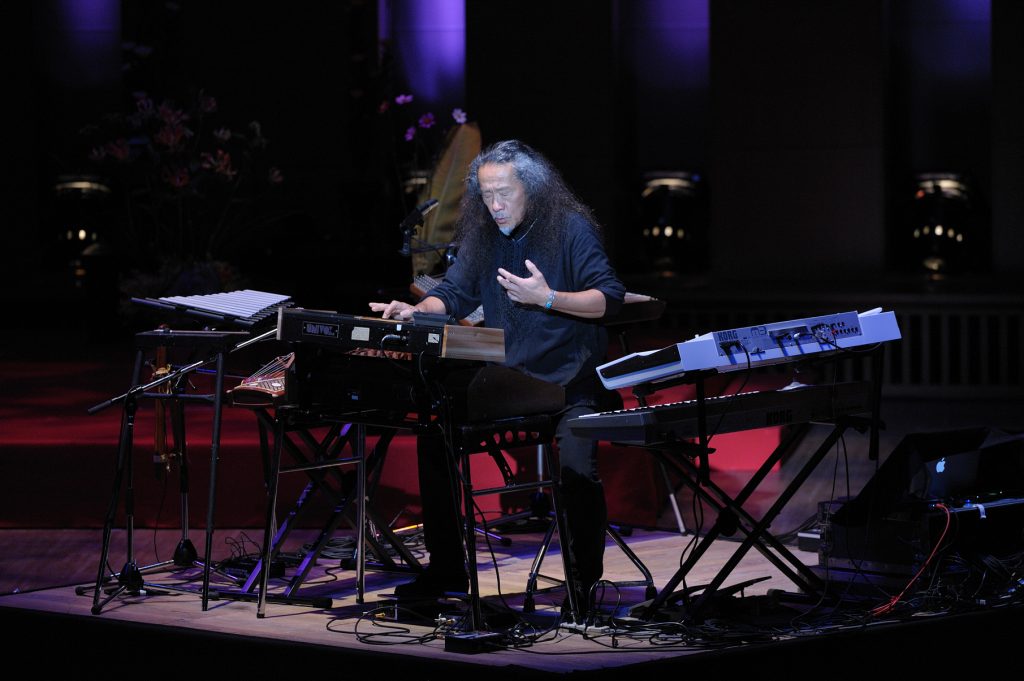
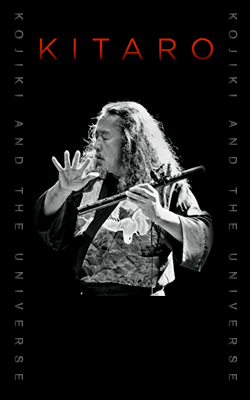

0 Replies to “Frank Serafine, Michael Wilson, Howard Sapper journey inside the creation of Kitaro’s Kojiki and The Universe World Tour 2017”